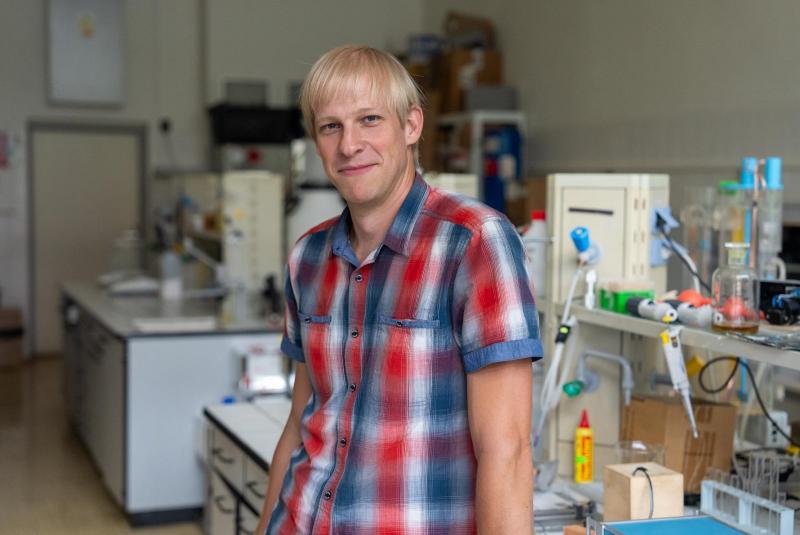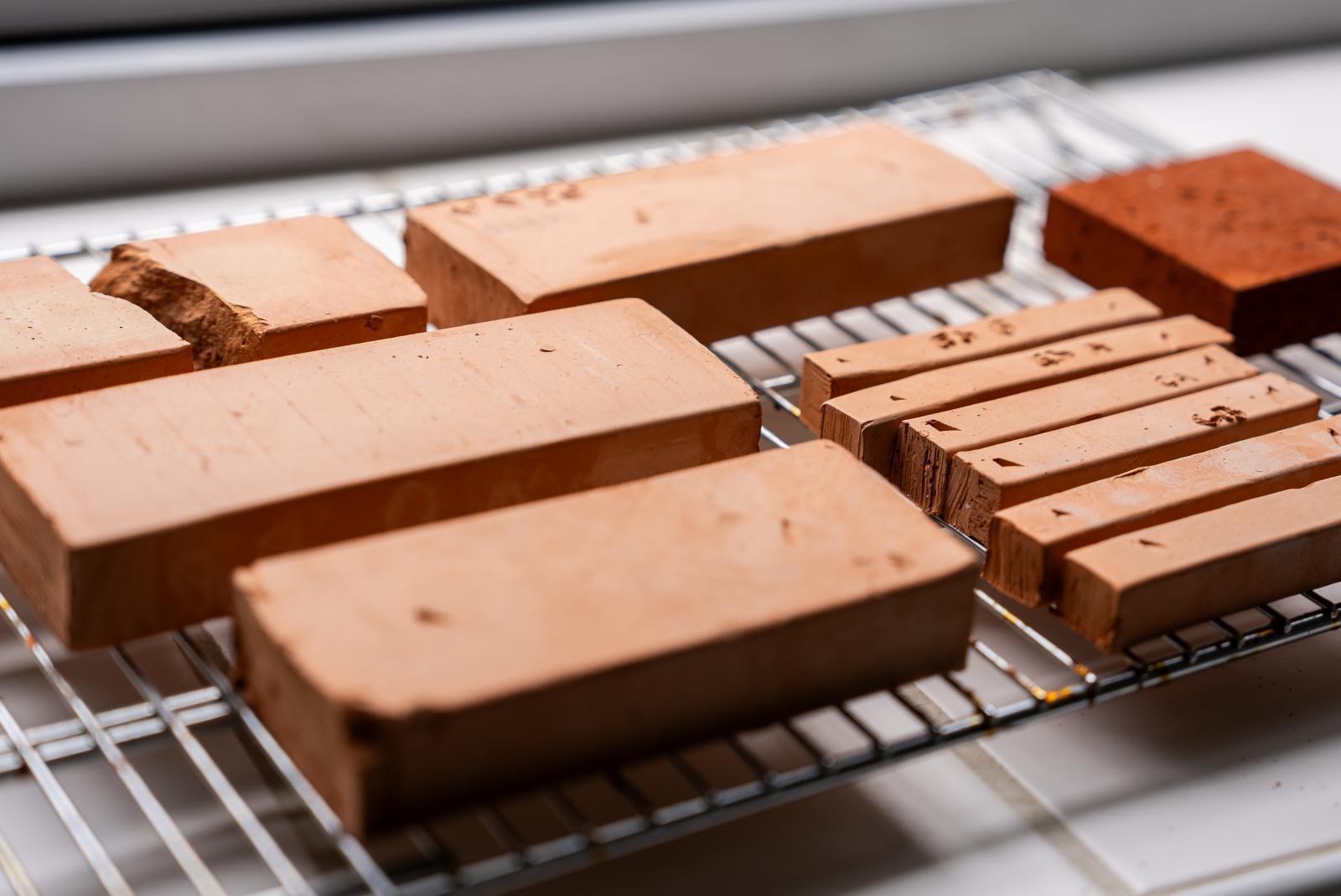Ideas and discoveries
Bold innovation in recycling: researcher Silvestr Figalla turns waste sludge into a valuable raw material

Without the need for additional adjustments
The sub-project entitled Technology of waste sludge processing from plastics recycling is part of the project National Centre of Competence in Polymeric Materials and Technologies for the 21st Century (Centre of Competence PolyEnvi21), which is provided by the Technology Agency of the Czech Republic. Its aim is to find a suitable use of waste generated during plastics recycling. Specifically, packaging, agricultural and stretch films.
The sludge that forms when contaminated plastics are washed is an often overlooked consequence of recycling. It is generated as a product of the treatment of process water, which is reused almost entirely in the recycling process after treatment. The separated impurities forming the waste still contain a significant amount of plastic content in the form of small particles, micro and nano plastics. Little is known about their long-term fate in the environment. Perhaps there is no question of a positive impact.
The initial intention was to separate this plastic from the sludge afterwards, but this was not economically viable. Plastic is currently very cheap and its complex salvage is unprofitable. A kilo of common plastics such as PE, PS, PP and PVC costs the same as a draught beer. Cost-effectiveness is also a top priority for recycling solutions. It was therefore necessary to find a use for the sludge in the form in which it is produced, without the need for additional treatment. In the end, this was achieved.
From the waste raw material material for further production
Sludge can be used as a raw material in the production of brick products in the form of a so-called leaching agent. In the manufacture of bricks, combustible substances are commonly added to the clay used, forming small cavities in the product after firing, thus making it lighter. Wood sawdust is commonly used for this purpose. However, sawdust is currently in short supply on the market due to the shift of processing of Czech raw wood abroad. Given the quantities needed for the brick industry, they are already prohibitively expensive.
Due to its properties, the sludge processed by the researchers can replace sawdust. It is even made up of about half of the clay that comes in from recycled dirty agricultural films. Interestingly, these agricultural films are also transported from all over Europe, so a Czech brick could in future contain a small amount of clay from a Spanish greenhouse, for example. The rest of the sludge is made up of burnable substances that cause the bricks to become lighter.
The sludge can be applied locally at the nearest brickworks, which are evenly distributed in the country due to the limitations of transport of building materials. The method thus has a considerable economic benefit, both in terms of savings on the purchase of existing sludge clarifiers and on the part of the sludge generator, who pays for its disposal. Moreover, the price of landfilling of recoverable waste is increasing, with the aim of banning it completely within 20 years.
The solution found is instructive in that it is sometimes worthwhile to venture into a completely different field and not just stick to the expected role and area of research. "Sometimes a quirky and bold solution can be the right one. I came up with the idea to try mixing waste sludge containing plastics by accident, thanks to my passion for ceramics. It is common to add combustible substances, such as paper, to ceramic clays to modify their workability and the final properties of the clay and products. The sludge samples I obtained reminded me of these raw materials. Our research group is not involved in ceramics and this was a step into an area that was unknown to us," says Dr Figalla.
"These activities coincidentally met with an interested party from a large brick and building element manufacturer who was discussing the possibility of exploring alternative lightening agents at our site. We had no idea of the existing shortage of these additives until then. Following an agreement, we were able to carry out the research in the manufacturer's specialist brick laboratory, which gave us useful insight into the issue and the opportunity to consult with practitioners on the subject. We thus gained important feedback that is often lacking in academia," he continues.
Environmental responsibility
A major problem with the recovery of any sludge is the high water content. This makes it impossible to incinerate these wastes and increases transport costs. With the proposed recovery, the 80 % water content of the sludge does not matter. The brickmaking clay is artificially moistened to achieve the necessary plasticity. The water in the sludge thus becomes part of the clay.
The bricks are dried before firing, and the energy content of the combustible substances from the sludge, consisting mainly of plastics and paper pulp from the labels of recycled plastic products, can be used during firing. The addition of sludge thus leads to a saving of gas in the kiln and has other positive effects such as increased strength of the not yet dried and dried but not fired bricks. This enables robotic handling of these products without the risk of deformation or cracking. In addition, the problematic substances contained in the sludge are burned off during firing. There is therefore no risk of them being released into the environment, as is the case with landfill material.
What Dr. Figalla values most about his work is the freedom to make decisions and to come up with innovative solutions to problems. "In our work, often only the expected result is given, the path to it is usually left in the hands of the researcher. I am motivated by the opportunity to push the development of technology forward, even though the actual implementation of ideas in practice rarely happens and there is often no feedback on the future fate of the submitted work. Everyone's dream is to come up with something truly revolutionary. By their very nature, technology-oriented projects do not offer this possibility; the resulting solution to a problem is just one of many possible solutions. In the research mentioned above, I see an opportunity to help nature by removing a source of waste that is being exported to it. Our research group is increasingly specialising in the recycling and reuse of plastic waste, and I think for most of us a sense of environmental responsibility is a major motivation," he explains.
The project involves not only research institutes, but also the application sphere. This creates a network of contacts to increase mutual awareness and to benefit from publicly funded scientific institutions. The researchers are associated in a consortium of universities BUT in Brno, UTB in Zlín, VŠCHT in Prague and limited liability companies Fortemix, ZODPA and ASIO TECH. These partners are exploring the problem on their own or collaborating in some areas to find possible solutions. From these, they then select the best option that is both economically and environmentally relevant.
The main solver is the company ASIO TECH. The project was recently shortlisted for the SDGs Awards, which are announced by the Association of Corporate Social Responsibility and recognise initiatives and projects that contribute to a sustainable future for the Czech Republic.
(jo)
Source: Faculty of Chemistry BUT
From Prosecco to Bioplastics: An Italian Scientist's Journey to Sustainable Innovations
„Plastics will always be here, we just need to treat them differently," says the chemist Adriána Kovalčík, who has learned to face challenges
Cheaper, better quality and eco-friendly. FCH BUT researchers create new dextrin adhesive
From Munich to Brno by bike: Interview with double degree student Jana
PhD student Jiří Lindovský: I enjoy tackling the challenges of transferring experiments from the lab to practice